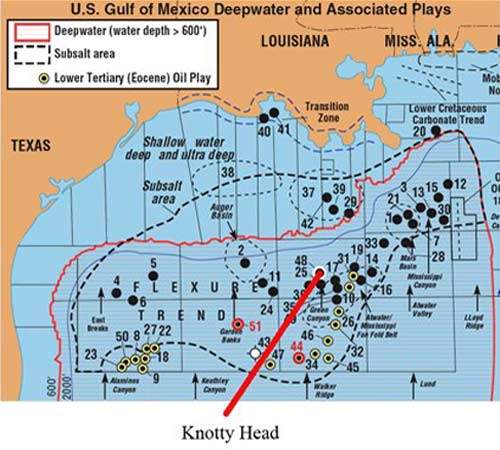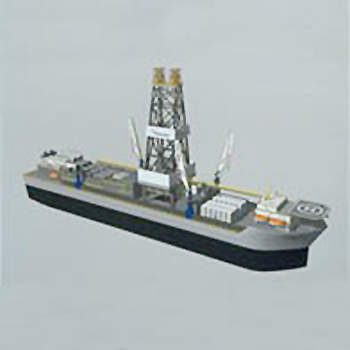The Knotty Head field lies in Green Canyon block 512 in the Gulf of Mexico. It is operated by Nexen Petroleum with a 25% working interest. Other equity partners include StatoilHydro 25%, BHP Billiton 25% and ChevronTexaco 25%.
The field lies in 3,500ft of water close to the Chevron-operated Tahiti and Tonga discoveries.
The field was discovered in 2005 by the Knotty Head-1 discovery well. The well encountered approximately 600ft of net oil pay in multiple zones in the lower miocene of the Mississippi fan foldbelt.
Knotty Head field development
The Knotty Head 1 was drilled by the TransOcean Discoverer Spirit drillship. The well reached a total depth of 34,189ft and is the deepest well drilled in the Gulf of Mexico.
The field set a record for the deepest real-time Logging While Drilling / Measuring While Drilling (LWD / MWD). The well also set a third record for the longest 14¾in-bit run at 11,545ft and a total depth of 24,085ft.
In order to determine the extent of the discovery, Nexen followed this up by a sidetrack well drilled downdip to a total depth of 32,986ft, with a bottom-hole location approximately 4,500ft to the south of the original wellbore. The sidetrack encountered all reservoirs seen in the discovery well and approximately 400ft of net oil pay were logged.
Nexen’s pre-drill resource estimate for the field, prior to drilling the first exploration well, was 350 million to one billion barrels. Based on the results of this drilling, the resource estimate was reduced to 200 million to 500 million barrels of oil equivalent.
Development operations at the field required a rig that can drill more than 8km below the seafloor. Due to the unavailability of a rig of such capacity, Nexen contracted Ensco International in 2006 to construct two newbuild deepwater drilling rigs.
The initial exploration plan filed by the operator envisages at least four wells to be drilled on GC 512. In April 2009 Nexen submitted a Supplemental Exploration Plan to the Minerals Management Service to drill and abandon two wells from a common surface location.
In October 2009 ENSCO 8501 started drilling operations at the field. The rig, which is is contracted by Nexen and Noble Energy for three and a half years, spudded an appraisal well at the field.
The Ensco 8502 rig arrived at the field in July 2010 and underwent sea trials. Due to the drilling moratorium placed in the Gulf of Mexico, acceptance of the rig is expected to be delayed. Nexen planned to drill two appraisal wells at the field using the two rigs. The drilling moratorium is expected to delay the drilling and exploration activities at the field.
Nexen is currently evaluating field development alternatives. The field is not expected to start production until after 2010.
ENSCO 8501
The ENSCO 8501 is an ultra-deepwater semisubmersible rig built by Keppel FELS in Singapore. The rig can drill in 8,500ft of water to a depth of 35,000ft.
It can be upgraded to a water depth of 10,000ft and can accommodate up to 150 personnel. The vessel was delivered to Ensco in June 2009 with final fitting and dynamic positioning sea trials were carried out in August 2009.
Operations began at the field in October 2009.
ENSCO 8502
ENSCO 8502 is the second ultra-deepwater semi-submersible rig contracted for the field. Built by Keppel FELS in Singapore, the rig has the same drilling depth capability of 35,000ft as that of ENSCO 8501.
Knotty Head contracts
Floatec, the 50-50 joint venture between J Ray McDermott and Keppel FELS created to deliver deepwater floating production systems, is finishing a concept screening study for Knotty Head.
FloaTEC will evaluate tension leg platforms, spars, floating production, storage and offloading vessels, and subsea options for the field. Both wet and dry tree options will be considered.









